NASA displays Apollo capsule hatch 50 years after fatal fire
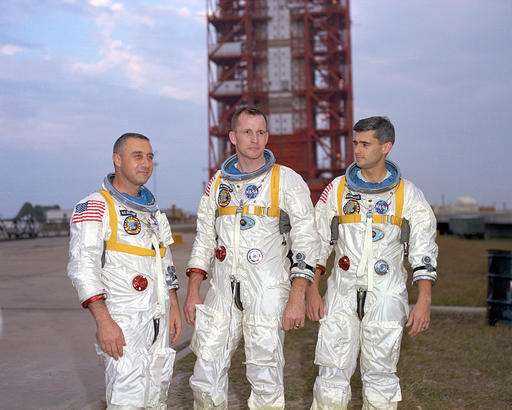
A relic from America's first space tragedy is finally going on display this week, 50 years after a fire on the launch pad killed three astronauts at the start of the Apollo moon program.
The scorched Apollo 1 capsule remains locked away in storage. But NASA is offering visitors at Kennedy Space Center a look at the most symbolic part: the hatch that trapped Gus Grissom, Ed White and Roger Chaffee in their burning spacecraft on Jan. 27, 1967.
A flash fire erupted inside the capsule during a countdown rehearsal, with the astronauts atop the rocket at Cape Canaveral's Launch Complex 34. A cry came from inside: "Got a fire in the cockpit!" White struggled to open the hatch before quickly being overcome by smoke and fumes, along with his two crewmates. It was over for them in seconds.
Investigators determined the most likely cause to be electrical arcing from defective wiring.
With its moon program in jeopardy, NASA completely overhauled the Apollo spacecraft. The redesigned capsule—with a quick-release hatch—carried 24 men to the moon; 12 of them landed and walked on its surface.
For the astronauts' families, Apollo 1 is finally getting its due. The tragedy has long been overshadowed by the 1986 Challenger and 2003 Columbia accidents. Remnants of the lost shuttles have been on display at the visitor complex for 1 ½ years.
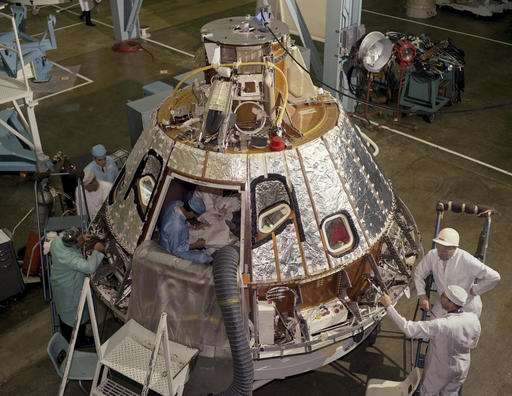
"I'm just so pleased that they finally decided to do something—visibly—to honor the three guys," said Chaffee's widow, Martha. "It's time that they show the three who died in the fire appreciation for the work that they did."
On Friday—the 50th anniversary—the crew's families will help dedicate the new exhibit. For most of them, a private tour Wednesday marks the first time they've seen any of the capsule.
"This is way, way, way long overdue. But we're excited about it," said Scott Grissom, Gus' older son. NASA was embarrassed about the fire "and that's why they pretty much kept it in the closet as long as they have."
Like the rest of America, NASA was in shock and simply did not want to talk about it, said Martha Chaffee. Exhibits at Kennedy and elsewhere would mention the fire but not highlight it.
As the years and decades rolled by, Apollo 1 became a mere footnote in space history. Chaffee's daughter, Sheryl, who retired last month after working at Kennedy for 33 years, recalls having to buy a memorial wreath herself to display at the space center on the 20th anniversary.
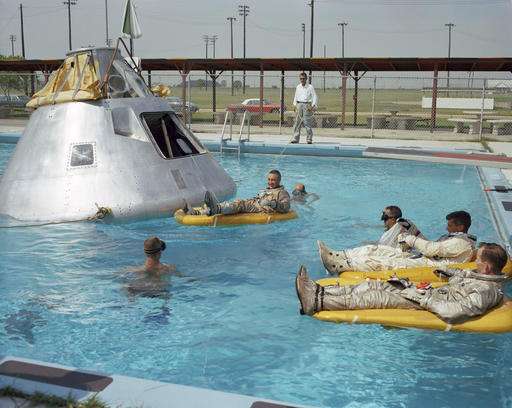
The Astronauts Memorial Foundation took over the annual observance that honors all astronauts killed in the line of duty—this year's ceremony is Thursday. But it wasn't until NASA unveiled its tribute to the 14 Challenger and Columbia astronauts in June 2015 that the agency wondered why it hadn't done anything similar for Apollo 1.
"This wasn't our generation ... it wasn't on our radar" like the shuttle accidents were, explained Kelvin Manning, associate director of Kennedy Space Center. Determined to make things right, he and others at Kennedy began work on a display.
NASA consulted the two surviving widows and six children, explaining it wanted to honor the three men and their sacrifice, and show how Apollo 1 ultimately paved the way to the moon. Grissom, an original Mercury astronaut, was the second American to fly in space. White was the nation's first spacewalker. Chaffee was the rookie for the flight, a demo in low-Earth orbit.
With the families' blessing, NASA last year pulled the hatch from storage at Langley Research Center in Virginia.
All three layers of the hatch underwent preservation, but were not altered in any way. The white outer hatch is still discolored and pitted, with what looks to be charring in an upper corner. The middle hatch appears darkened. The orange inner hatch is scuffed.
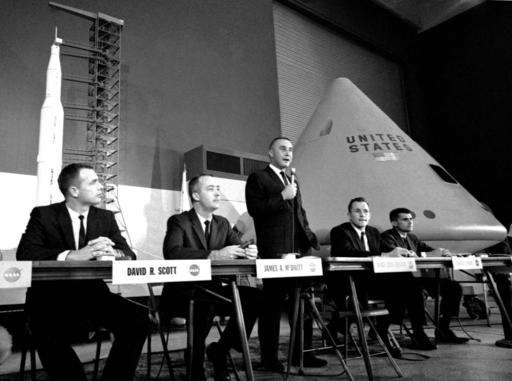
The three sections stand side-by-side.
In the very next display case is the redesigned hatch. It was just one of numerous changes made to the spacecraft, as well as to procedures. No more pure oxygen, high-pressure cabin atmosphere on the ground, for example, and everything fireproofed inside. The exhibit is in the same building that holds one of three remaining Saturn V rockets built for moon shots.
Bonnie Baer, White's daughter, is grateful the entire capsule is not on display, as so many other family members have been urging for decades. "I want them to be remembered for the other things and not necessarily for the accident," she said.
As the 30th anniversary of the fire approached, Betty Grissom, Gus' widow, had pushed to have the capsule put on public display. The request was denied.
"There's a long list of places where really bad things happened to our country, but we display those respectfully and appropriately," Scott Grissom said, citing the Alamo, Gettysburg and the Arizona Memorial at Pearl Harbor.
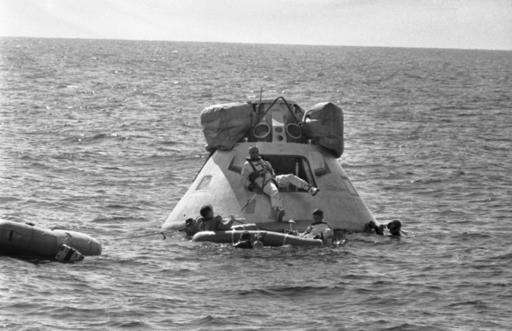
The retired FedEx pilot said displaying the hatch is a start.
"This is a long overdue step at doing right."
-
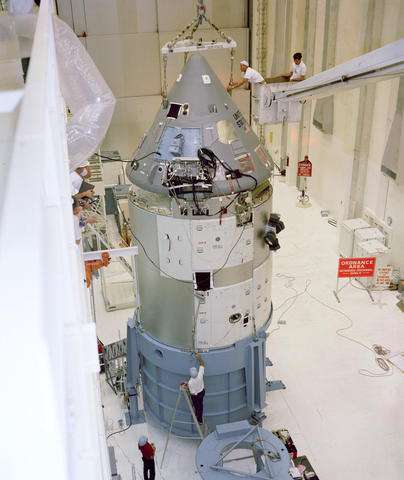
In this 1967 photo made available by NASA, the Apollo Command/Service Module in the Manned Spacecraft Operations Building at the Kennedy Space Center in Florida is prepared for the Apollo/Saturn 204 mission. During a launch pad test on Jan. 27, 1967, a flash fire erupted inside the capsule killing Apollo crew members Roger Chaffee, Edward White II, and Virgil Grissom. (NASA via AP) -
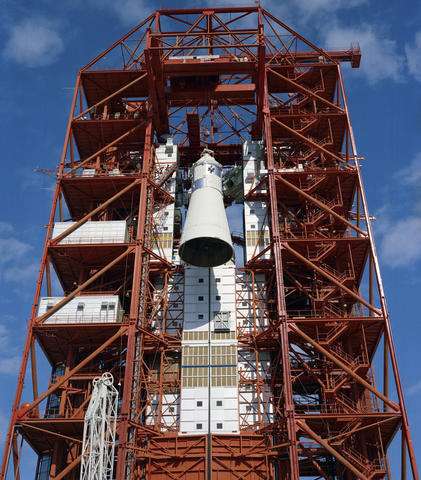
In this 1967 photo made available by NASA, the Apollo spacecraft is hoisted to the top of the gantry at Pad 34 at Cape Kennedy, Fla., for the Apollo/Saturn 204 mission. During a launch pad test on Jan. 27, 1967, a flash fire erupted inside the capsule killing the three Apollo crew members. (NASA via AP) -
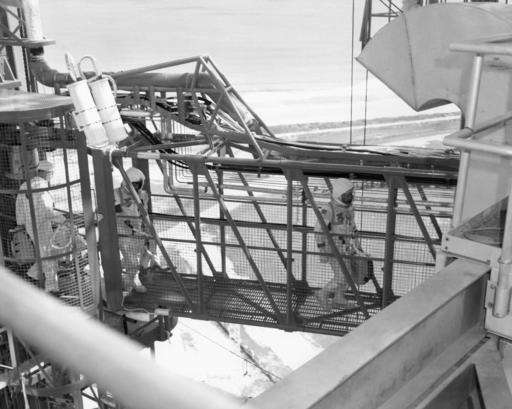
In this Jan. 27, 1967 photo made available by NASA, astronauts Virgil Grissom, right, and Roger Chaffee walk across the ramp leading from the gantry elevator to the Apollo I spaceship in Cape Kennedy, Fla., before a launch test. Later in the day they were killed with fellow astronaut Edward H. White II when a flash fire erupted in the craft. (NASA via AP) -
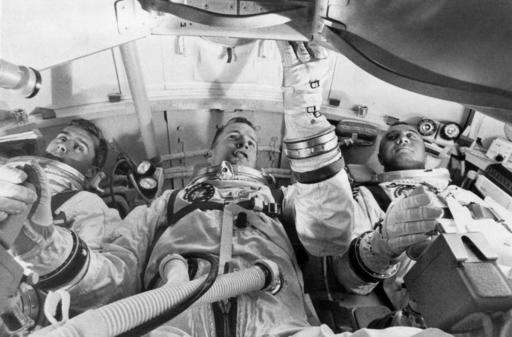
In this undated photo made available by NASA, from left, astronauts Roger Chaffee, Edward White II, and Virgil Grissom, practice for their launch test in the Apollo Mission Simulator at Cape Kennedy, Fla. During a launch pad test on Jan. 27, 1967, a flash fire erupted inside their capsule killing the three Apollo crew members. (NASA via AP) -
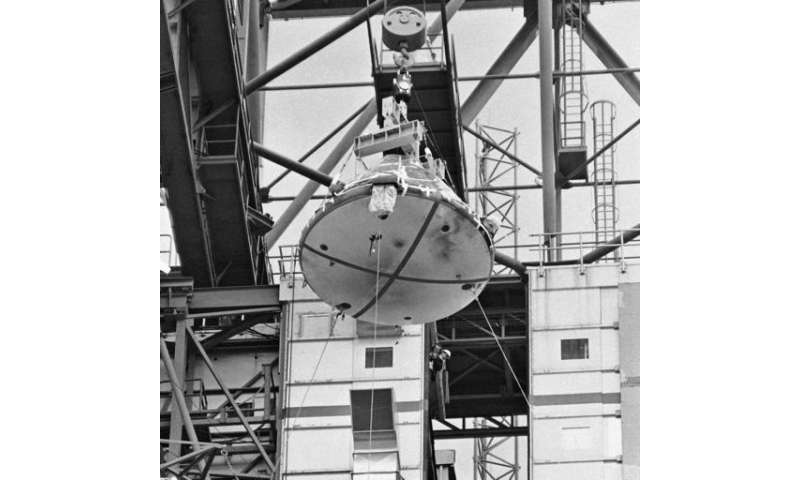
In this Feb. 17, 1967 file photo, the Apollo 1 capsule, with black smudge marks visible on the heat shield, is lowered from its Saturn 1 booster at Cape Kennedy, Fla. During a launch pad test on Jan. 27, 1967, a flash fire erupted inside the craft killing the three Apollo crew members aboard. (AP Photo/Jim Kerlin, Pool) -
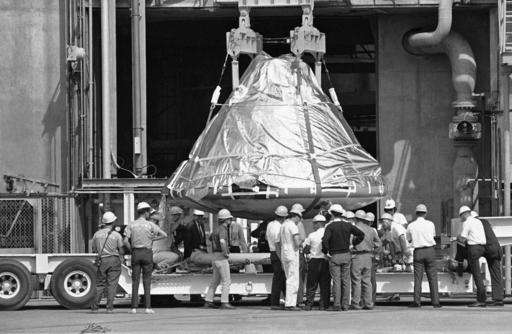
In this Feb. 17, 1967 file photo, technicians and officials inspect the aluminum covered Apollo 1 spacecraft after it was lowered from its booster at pad 34 at Cape Kennedy, Fla. Astronauts Virgil Grissom, Edward White and Roger Chaffee lost their lives when a flash fire erupted in the spacecraft on January 27. (AP Photo/Jim Kerlin, Pool) -
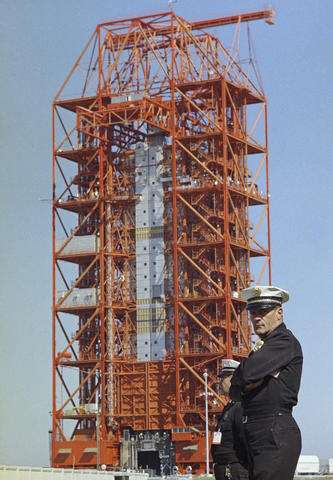
In this Jan. 28, 1967 file photo, guards stand at the Saturn 1 launch pad area the day after a flash fire killed the Apollo 1 crew at Cape Kennedy, Fla. Three astronauts, Lt. Col. Virgil Grissom; Lt. Col Edward H. White, and Lt. Commander Roger Chafee were killed when a fire erupted in their capsule on the launch pad during a preflight test for the Apollo 1, AS-204 mission. (AP Photo) -
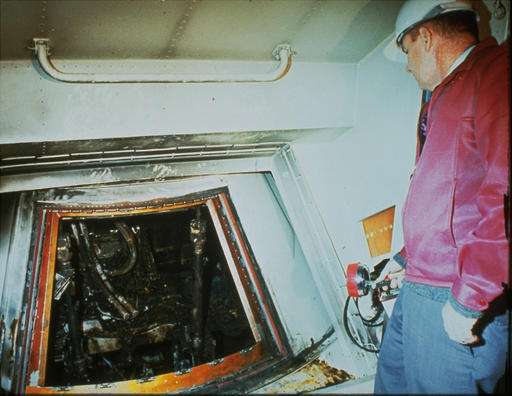
This 1967 file photo shows the charred interior of the Apollo I spacecraft after a fire which killed astronauts Ed White, Roger Chaffee, and Virgil Grissom on Jan. 27, 1967. A NASA official said the rehearsal had reached 10 minutes away from a simulated blastoff, one of many tests that was to precede the planned flight in the next month. (AP Photo) -
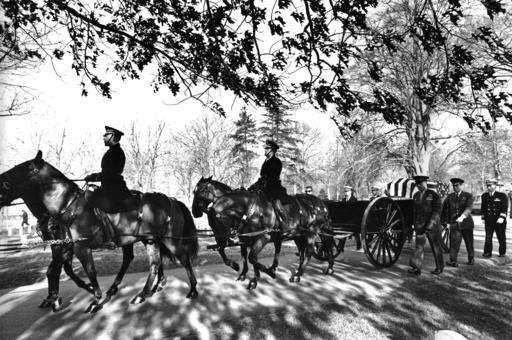
In this Jan. 31, 1967 file photo, a horse-drawn caisson carrying the body of astronaut Virgil Grissom travels to the Arlington National Cemetery in Arlington, Va. Walking beside the flag-draped casket as honor pallbearers are astronauts, from left foreground, Marine Col. John Glenn, Air Force Col. Gordon Cooper, Navy Cmdr. John Young; from left background are Donald Slayton, Navy Capt. Alan Sheperd and Navy Cmdr. Scott Carpenter. Grissom was killed in the Apollo 1 fire on launch pad on Jan. 27, 1967. (AP Photo) -
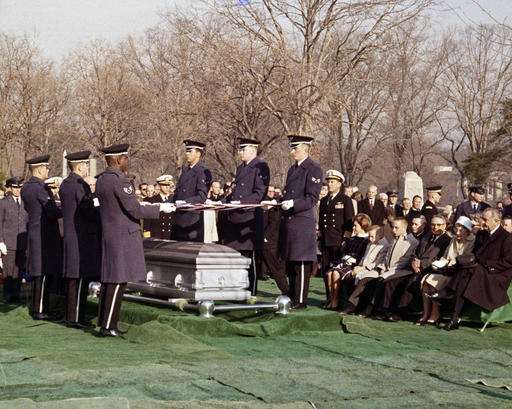
In this Jan. 31, 1967 file photo, mourners attend the burial of astronaut Virgil Grissom at the Arlington National Cemetery in Arlington, Va. Grissom, 40, was selected in 1959 as one of the seven original Mercury astronauts. Known as the hard luck astronaut, he had to swim for his life when his craft, Liberty Bell 7, sank after its descent on the second U.S. manned space flight July 21, 1961. (AP Photo)
© 2017 The Associated Press. All rights reserved.



















